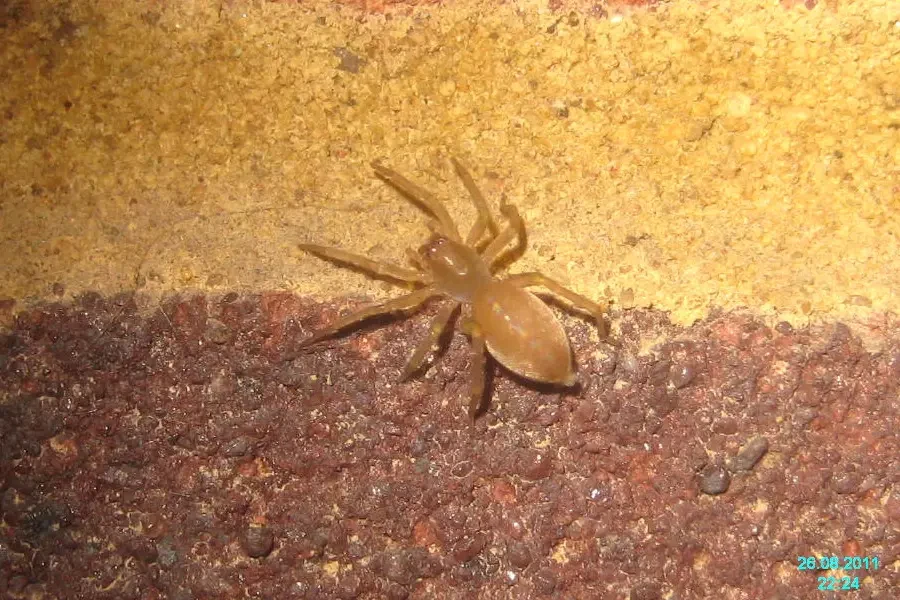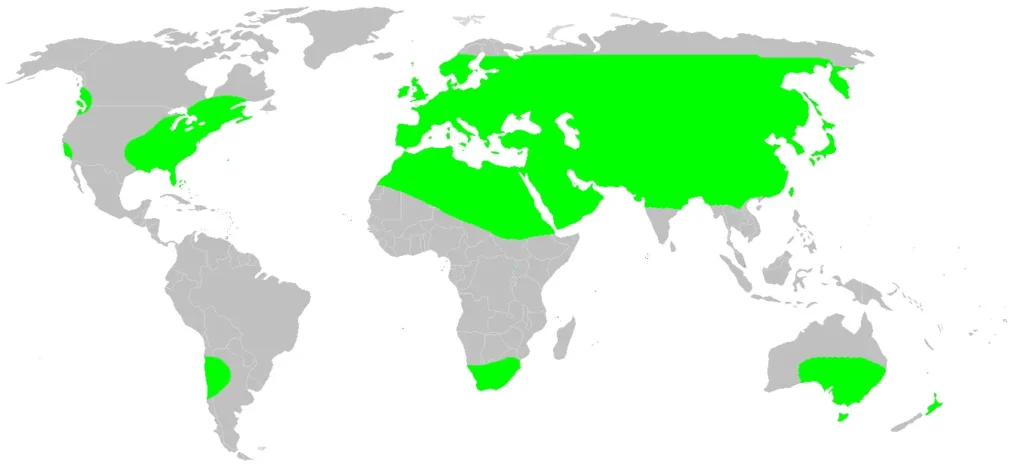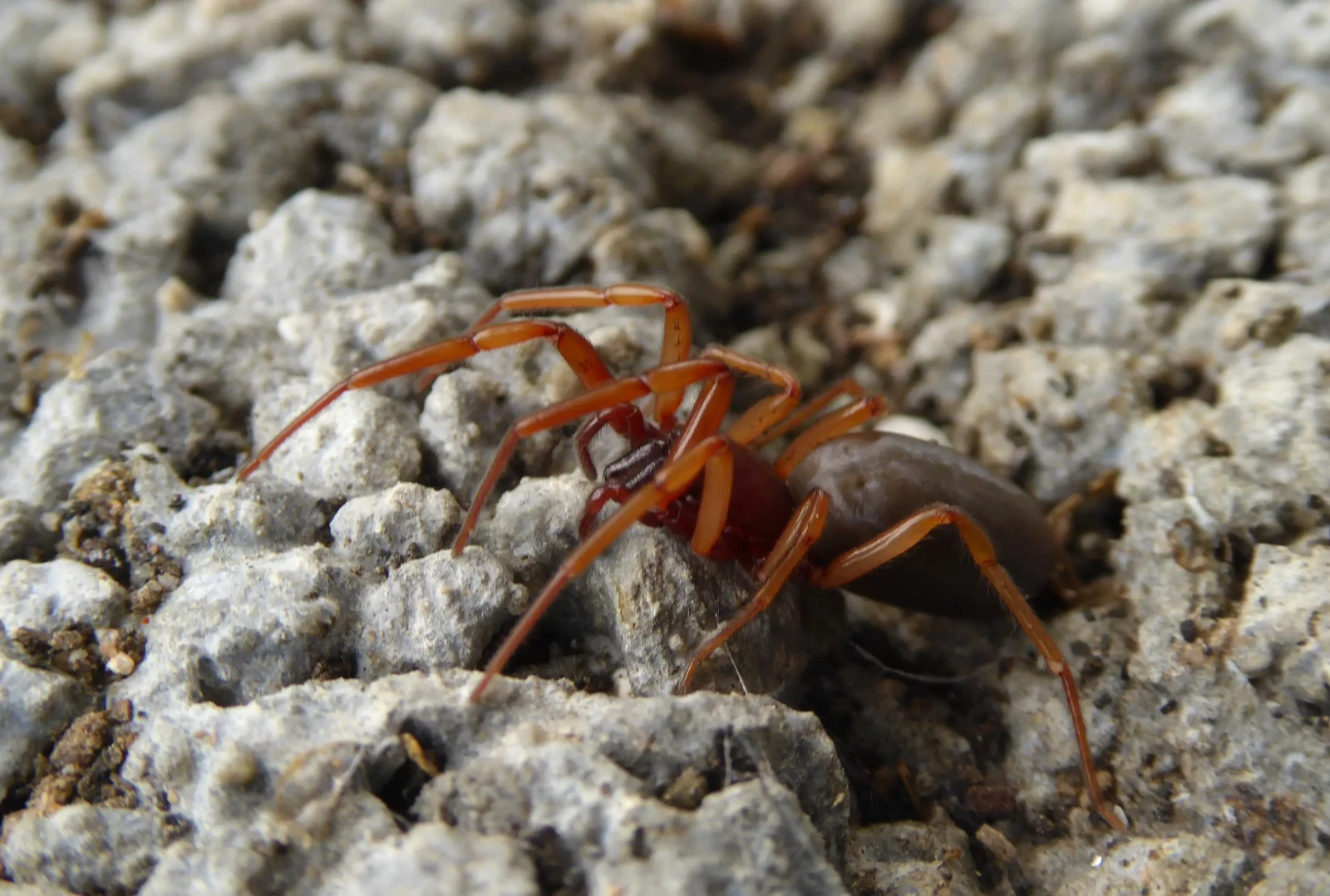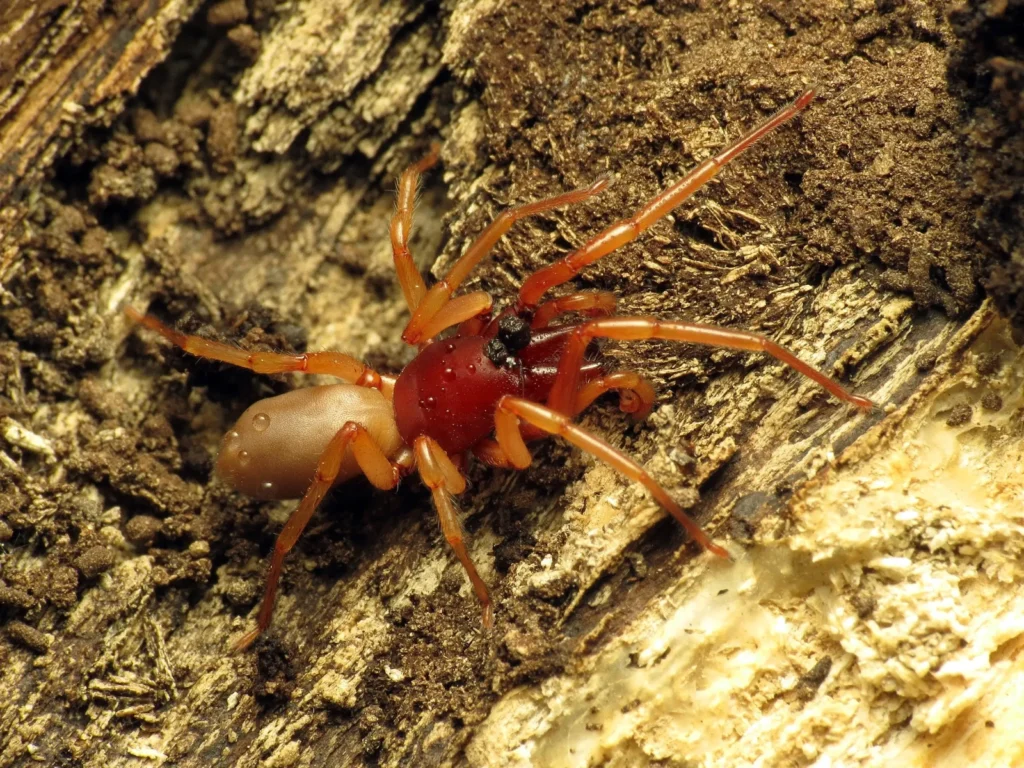Spider Dysdera crocata, known as the woodlouse spider or cannibal spider, is a unique member of the arachnid family that specializes in hunting woodlouses. Its distinctive appearance – long chelicerae, shiny red body and grayish abdomen – makes it recognizable among other species.
This spider is often found in the wild, as well as in human dwellings, including basements, gardens, and attics. Despite its menacing appearance, it is not dangerous to humans, and its bite only rarely causes discomfort.
Let's take a closer look at the biological characteristics, lifestyle, and significance of this spider in nature.

Scientific classification
✔ The Kingdom: Animals (Animalia)
✔ Type: Arthropods (Arthropoda)
✔ Class: Arachnids (Arachnida)
✔ Row: Pavuk (Araneae)
✔ Family: Dysderidae
✔ Gender: Dysdera
✔ View: Dysdera crocata
Appearance and features
✔ Size:
• Females: 11–15 mm
• Males: 9-12 mm
✔ Colour:
• Head and chelicerae – reddish-brown
• Abdomen – yellowish-gray or gray-brown
✔ Body type:
• Elongated, smooth body
• Long, powerful chelicerae
• Relatively short hind legs
Females are usually larger than males, but both sexes are similar in color and structure. The spider has only six eyes (unlike most spiders, which have eight).

Distribution and habitat
🌍 Geographic distribution:
✔ Southern Europe (main range)
✔ North America, Australia, New Zealand (introduced species)
✔ Temperate climate zones of Europe
🏡 Where does it live?
✔ Damp, dark places
✔ Under stones, tree bark, in the soil
✔ In gardens, parks, basements, old buildings
Spider Dysdera crocata does not build webs, but leads an active lifestyle, hunting its prey at night.
Lifestyle and behavior
✔ Solo lifestyle
✔ Leads a nocturnal lifestyle
✔ Does not weave webs – uses active hunting
✔ Defends himself, but does not attack a person without reason
The woodlice spider uses its large chelicerae to pierce the hard shells of woodlice, which are its main prey.
Food
🍽 What does Dysdera crocata eat?
✔ Woodlice (main prey)
✔ Small insects
✔ Other invertebrates

🔍 Hunting tactics:
• The spider tracks down woodlice in dark, damp places.
• Uses powerful chelicerae to pierce the victim's shell.
• Injects a poison that paralyzes the woodworm and liquefies its internal tissues.
• Sucks out the victim's internal contents.
Due to its narrow specialization, this spider plays an important role in regulating the wood mite population.
The bite and its effect on humans
❗ Is the woodlouse spider dangerous?
Its bite is not fatal, but it can cause unpleasant symptoms.
🔴 Possible reactions to a bite:
✔ Local pain (resembles a wasp sting)
✔ Slight redness and swelling
✔ In rare cases – headache or nausea
The bite of this spider rarely penetrates deeply into human skin due to the specific structure of the chelicerae.
First aid for a bite
✔ Wash the bite area with soap and water
✔ Apply a cold compress
✔ Avoid combing
✔ If symptoms persist, consult a doctor
In general, the bite Dysdera crocata does not pose a serious danger to a healthy person.
Reproduction and life cycle
✔ Mating season: spring - summer
✔ The female lays up to 70 eggs in a special cocoon.
✔ Young spiders emerge after 3–4 weeks.
✔ Females can live up to 3–4 years.
The female takes care of her offspring, guarding the cocoon in a protected place.

Interesting facts about Dysdera crocata
🕷 It is one of the few spiders that specialize in hunting woodlice.
🕷 Its chelicerae are among the longest among spiders of its size.
🕷 Has only 6 eyes, unlike 8 in most spiders
🕷 Does not weave fishing webs, but hunts actively
Conclusion
Dysdera crocata – an interesting representative of arachnids, which specializes in hunting woodlice. Thanks to its powerful chelicerae, it effectively copes with the hard shells of its victims, playing an important role in regulating the number of woodlice in nature and human settlements.
Although its appearance may seem threatening, this spider is not aggressive and rarely comes into contact with humans. If you encounter Dysdera crocata in your home or garden, know that it is a natural controller of the wood mite population and does not pose a serious threat.
🕷 Have you ever seen this spider? Share your experience in the comments!